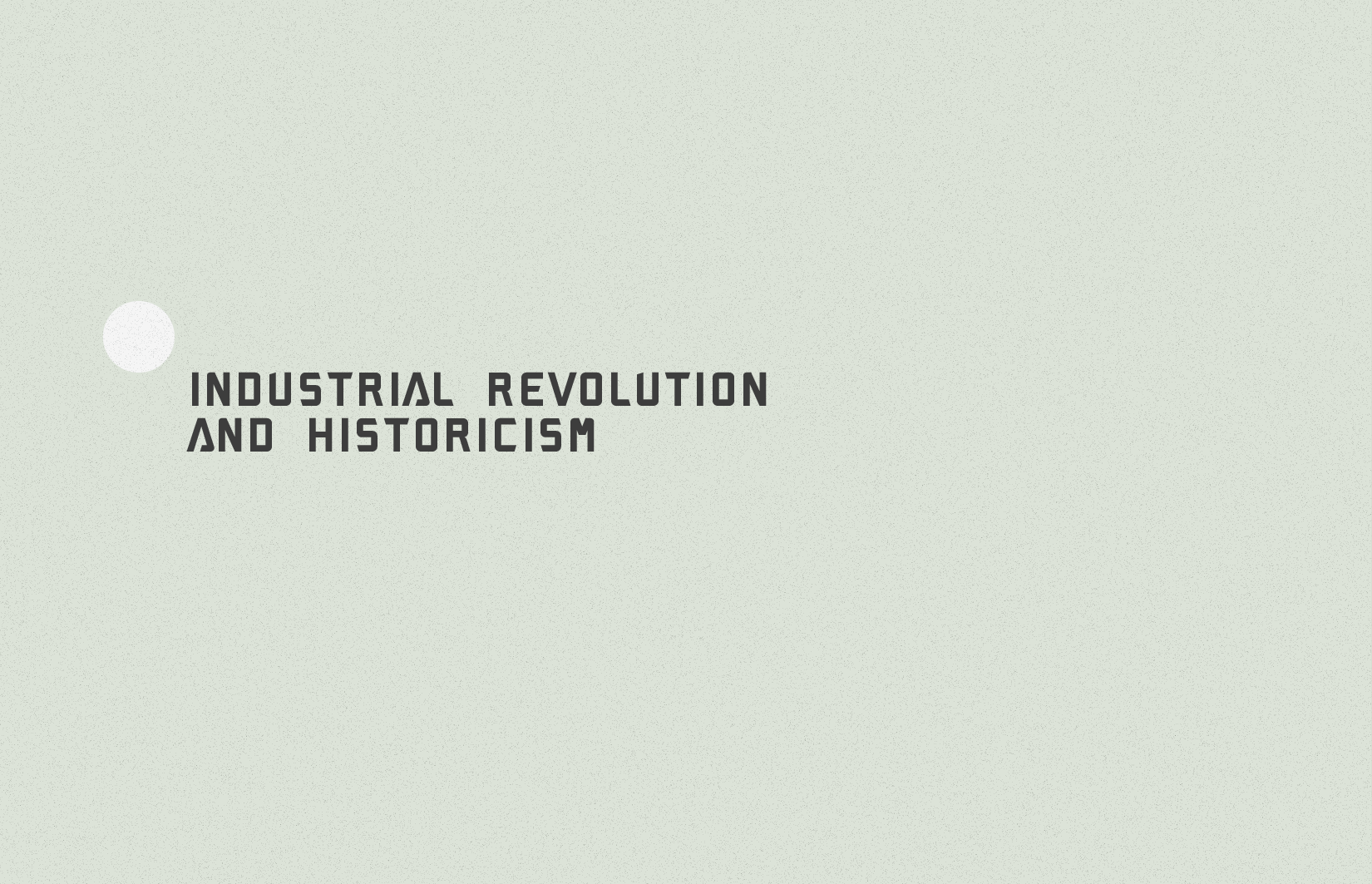INDUSTRIAL REVOLUTION & HISTORICISM REPORT
Industrial Revolution is known as the period where agrarian societies became industrial and urban. This took place during the 18th to 19th centuries where mechanisation, the factory system and mass production were prioritised. Industrialisation not only shaped the world’s economy but also played a pivotal role in the shift of focus in the world’s design scene. At the beginning of the Industrial Revolution, designers and artists struggled with simplifying complex designs for the masses. This process of reduction and simplification meant less time allowed to spend on the crafts. This made me question if design lost its meaning and value during this period of time.
Contrary to my thoughts, the Industrial Revolution in actual fact acted as a bridge that connected art and functionality – giving birth to fresh and well-admired designs. There were two key features of the Industrial Revolution, the Textile and Steam Engine industry of which both gave rise to functional and efficient machines that allowed large scale manufacturing and helped boost the economy.
It is obvious that The Industrial Revolution definitely influenced the world in more than one way. Technologically, the usage of new materials were reduced, new energy sources were introduced and development of transportation and communications increased. Socio-economically, more jobs were created and free trade boosted. However, not all influences were positive, an example of a negative influence was the drop of standards of living within the working class. The Industrial Revolution introduced the idea of changing complex designs to simple ones that were affordable by the mass and not just the rich. In addition, Industrialisation also promoted the idea of globalisation and pushed for more functional designs made with fresh technology. This eventually led to the evolvement of new design movements.
One design movement that evolved in reaction to the industrial revolution was the Arts and Crafts Movement. The movement began in the late 19th century and was one of the first design movements that disagreed with industrialisation. The Arts and Crafts movement believed that the urban and mechanised society was dull and unfulfilling. Some key features of the movement included the use of “high quality materials and emphasis on utility of design” – a great disparity from the Industrial Revolution. Materials such as wood, metal, enamel and glass were largely used in this period of time. The fine craftsmanship and ornate details associated the Arts and Crafts Movement closely with the Aesthetic movement of which has a slogan,“Art for art’s sake”. Through the Arts and Crafts Movement, the mass grew appreciative of the decorative arts that most popularly consisted of floral, mosaic, stained glass and tapestry decoration. Even though it is clear that the Arts and Crafts Movement was against simplified designs created during the Industrial Revolution, it in itself also portrayed a simplified version of nature as seen in its slightly repetitive decorative forms. This suggests that the Arts and Crafts movement was slightly influenced by industrialization despite being a major critic of it.
Not really considered to be a movement, but more of a term created to describe the integration of concepts of Japanese art into European art, is Japonisme. The study of Japonisme began together with the start of trade between Japan and Europe. Aesthetics and philosophies of Japanese design was appreciated and quickly became popular in Europe. Japanese often wrote poetry and as such they were able to stylize and symbolize complex scenes easily into wood block prints. Such prints consist ofwhiplashes and curves which are simplified versions of nature as compared to the Arts and Crafts Movement. With lesser details and more negative spaces, Japonisme inspired works were more affordable to the masses – an influence similar to the Industrial Revolution. Some Ukiyo-e woodblock prints created in the past are considered as world class prints today. An extremely famous one is, “The Great Wave off Kanagawa” by Katsushika Hokusai. Thus, this shows how impactful design movements are as it still relevant to the modern world today.
Speaking of the modern world, Japonisme art and design drove the creation of Modernism and Bauhaus designs. In Japonisme art and designs, negative spaces were translated into Modernism. Modernism focuses on basic elements of life which explains its undecorated, clean, minimal, simple forms and smooth finishes. Modernism runs by three main principles. Firstly, Modernism is the rejection of decoration and and applied ornament. Secondly, it emphasises the preference for abstraction. Lastly, it encourages the belief that design and technology could transform society. Thus, it is evident that Modernism is really an evolvement of industrialisation and completely against the Arts and Crafts movement.
Besides Modernism, Bauhaus also played a huge role in the world of art and design. Bauhaus was an influential modernist art school in the 20th century. Founded by Walter Gropius, it was a reaction to the chaotic. To elaborate, Bauhaus developed during a time of radical changes when WWI stripped away most social values. Artists were starting to get worried about the soullessness in products that might have been a result of the widening gap between creativity and manufacturing. Thus, through Bauhaus, designs, architecture and art became more functional with the use of true materials. It was characterised by minimalist, linear and geometric forms with the use of lines, shapes and colours. At this period of time, decorative art with the use of whiplash and curves were outdated and no longer as appreciated as compared to the time of the Arts and Crafts Movement.
In conclusion, historicism is indeed important to know and understand as it educates us on various art movements that have shaped is still shaping art and design in the world. With different techniques and characteristics, art movements can still create similar economic, technological and social influences in the world. It can be seen that art has progressively evolved from ornate details and decorative designs to functional and minimalist, clean designs. As art progresses, the gap between craftsmen and artists also decreases.
(985 words)
Works Cited
Catawiki. (n.d.). 5 Characteristics of Bauhaus Art, Architecture and Design – Catawiki. Retrieved
September 9, 2018, from
https://www.catawiki.com/stories/5263-5-characteristics-of-bauhaus-art-architecture-and-design
Encyclopaedia Britannica. (n.d.). Industrial Revolution | Definition, Facts, & Summary. Retrieved from
https://www.britannica.com/event/Industrial-Revolution
Japonism Movement, Artists and Major Works. (n.d.). Retrieved from
https://www.theartstory.org/movement-japonism.htm
Modernism: Building Utopia – Victoria and Albert Museum. (2013, January 31). Retrieved from
http://www.vam.ac.uk/content/articles/m/modernism-and-the-new/

